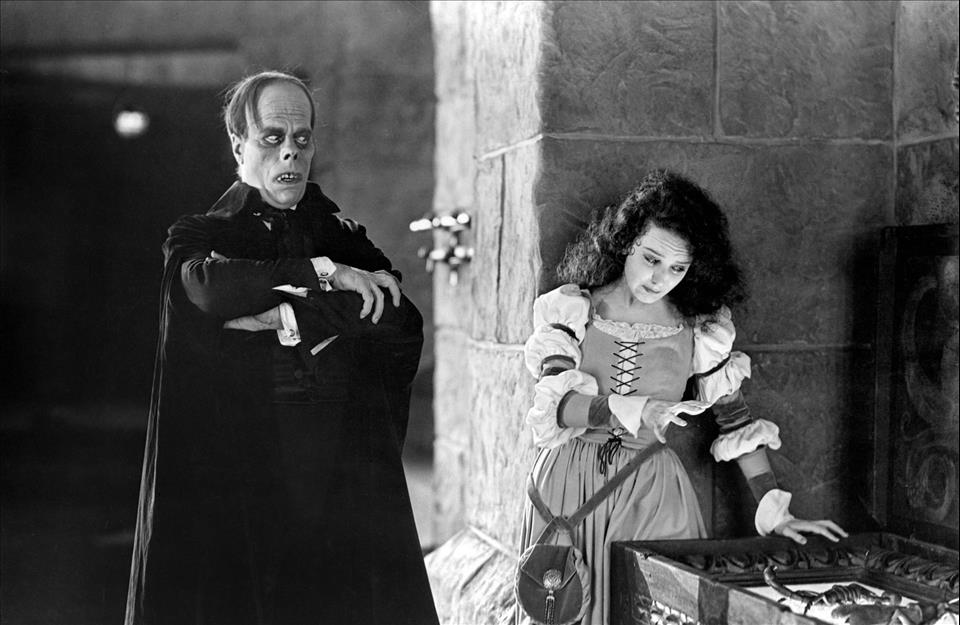Why Hollywood's First Iconic Phantom Of The Opera Film Is Still Puzzling Us, 100 Years On
Officially released on September 6 1925 in New York, and directed by New Zealand-born Rupert Julian , the film remains an iconic symbol of silent cinema, with plenty of spectacle and intrigue for modern viewers.
And even a century on, it presents some puzzles.
From novel to 1925 blockbusterGaston Leroux's Phantom of the Opera was published in France in 1909-1910, first serialised, and then as a novel.
In the story, a mysterious figure lurks in the Paris Opera House. This“Phantom” has an obsessive interest in a young singer, Christine, and manipulates her life and career from the darkness. The results include abduction, murder, nasty letters, and a chandelier-related disaster.
The 1925 silent film, produced by Universal, is the earliest surviving film adaptation we have of the novel. It was a large and costly production, with huge sets, spectacular colour sequences, and tumultuous edits and re-shoots before the official release.
It also had an extraordinary star in Lon Chaney. By the 1920s, Chaney had established a unique stardom, frequently focused on macabre roles and physical transformations. He was responsible not only for performing as the Phantom but also for his legendary makeup .
Lon Chaney was also widely known for playing Quasimodo in The Hunchback of Notre Dame (1923). Universal Pictures
So, 100 years later, what is Lon Chaney's silent Phantom like?
Tragic or toxic?A key question for any adaptation of The Phantom of the Opera is how it asks us to feel about the Phantom himself by the end. After all, he's a violent, obsessive man manipulating a vulnerable young woman.
Lloyd Webber's musical leans heavily into the original tale's elements of unrequited love and gothic romance. This can leave us wondering if we're being invited to romanticise dangerously toxic traits.
In 1925, horror hadn't yet been cemented as a film genre the way it is today. The studio was also keen on romance .
Various endings were filmed, including ones that would approximate Leroux's ending, wherein the Phantom gives his blessing for Christine's departure and gains some sympathy from the audience in his death.
But none of those made it to the final version. The ending that was ultimately used frames the Phantom as a clear villain, terrorising Christine until he's killed and thrown in the Seine by a crowd of angry Parisians.
This enduring villainy – and comeuppance – may be particularly refreshing for those who find the idea of a“romantic” Phantom more tiresomely toxic than tragic.
A tangled release historyThe 1925 film of The Phantom of the Opera is in the public domain, which means it's not restricted by copyright. A simple online search will lead to no shortage of options to celebrate the film's centenary.
But there is a hitch: there are many different versions of the film circulating online. The most common versions you'll find are actually from a somewhat confusing studio re-edit from 1929.
It includes alternate takes, changes in the story and scene order, missing scenes, new scenes, and even new characters. A rediscovered original colour sequence was also added into many of these versions much later.
As a result, the version most fans have been watching for the last century isn't the same one viewers saw in 1925.
This is a shame, since the 1929 version is regularly seen as inferior to the original. While the official 1925 version (or close to it) still exists , it remains overshadowed by the ubiquitous 1929 re-edit.
This is just one of the many complexities of the film's tangled release history, which includes a“talkie” version with sound added.
Trying to make sense of the various versions , and why they exist, is a great way to understand some of the difficulties film historians often face.
A great pathway into silent cinemaThe silent Phantom of the Opera still has plenty to offer.
Despite its enduring popularity, the film isn't necessarily regarded as one of the great films of the silent era, or even one of the best films of 1925 . Nevertheless, it remains an iconic film from the silent era, and a formative part of The Phantom of the Opera's cultural history.
It is still screened , circulates online and on blu-ray, and has new musical scores composed for it. Fans and film historians still discuss the puzzle of its various versions and work on restorations , making it a very living part of film culture.
It's also a fun and easy way to start exploring silent cinema. This is the silent movie that got me started!
In the film's 100th year, we can still hope there will one day be a fully-restored version of the official 1925 release to celebrate its legacy and untangle its complicated history once and for all.

Legal Disclaimer:
MENAFN provides the
information “as is” without warranty of any kind. We do not accept
any responsibility or liability for the accuracy, content, images,
videos, licenses, completeness, legality, or reliability of the information
contained in this article. If you have any complaints or copyright
issues related to this article, kindly contact the provider above.
Most popular stories
Market Research

- Chaingpt Pad Unveils Buzz System: Turning Social Hype Into Token Allocation
- Global Luxury Furniture Market Edition 2025: Industry Size To Reach USD 36.56 Billion By 2033, CAGR Of 4.06%.
- Japan Buy Now Pay Later Market Size To Surpass USD 145.5 Billion By 2033 CAGR Of 22.23%
- Bitmex And Tradingview Announce Trading Campaign, Offering 100,000 USDT In Rewards And More
- Excellion Finance Scales Market-Neutral Defi Strategies With Fordefi's MPC Wallet
- From Zero To Crypto Hero In 25 Minutes: Changelly Introduces A Free Gamified Crash Course






















Comments
No comment